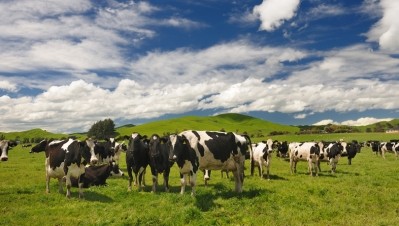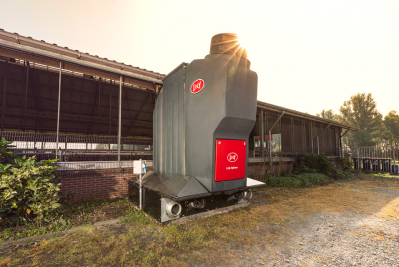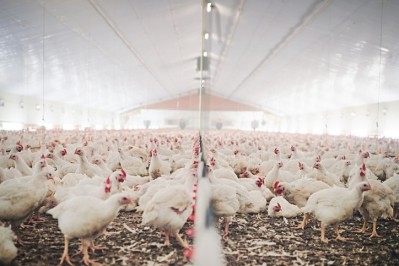Shifting alliances: How will global food and agri trade look in 2030?

“When thinking about the future, businesses need to consider possible scenarios and these shouldn’t always be straight line forecasts with a plus or minus contingency. I bet nobody had COVID-19 on their radar as a disruptor and we all had to deal with it very quickly. Thinking about these black swan events is something strategy departments need to have on their agenda,” Stefan Vogel, global sector strategist, grains & oilseeds, at Rabobank, told this publication.
Vogel made these comments in the context of a newly published RaboResearch report: ‘The F&A Fallout of a Fragmented World: A Thought Experiment’. An add-on to Rabobank’s 2020 report The World in 2030, this new ‘thought experiment’ explores the hypothetical implications for global food and agribusiness that would result from a shift in power from the US to China.
“China has emerged over the last 12 months from being a minor importer of corn to the world’s largest importer, and over the last decade it has become the largest importer of soybeans. Therefore it made sense to look at the relationship between the US and China and what it could mean if we see the world fragmenting and China striving to be the global hegemon,” explained Vogel, lead author of this latest report.
A not so pretty picture
The report sets out three possible scenarios for international alliances and examines the impacts each in terms of food security, trade flow disruptions, price pressure and supply and demand economics.
“Depending on the scenario, the impacts could be significant, partly threatening food security in deficit regions (China alliance) while hurting farmer margins in surplus areas (US alliance),” wrote the report’s authors.
In all three scenarios, the US is assumed to remain the dominant global power, albeit in a weaker position, and China and the US have decoupled.
Scenario one: ‘Somewhat manageable’
In scenario one, the US is joined by major exporters Canada, Australia, Ukraine and New Zealand, as well as key importers like Japan, Egypt, Mexico and India. China is joined by exporters of the former Soviet Union, and the EU and South America remain neutral.
Vogel explained that although on an aggregated basis across all commodities, this scenario neither results in the China alliance facing a huge deficit nor the US being left with oversupplies, it would still disrupt the “harmonized flow” of oil seed trade which relies on seasonality in different regions.
“China could probably still secure all the soybeans it needs from South America, but they would need to be stored, and what would happen in drought years?” ventured Vogel.
Scenario two: ‘Worst case’
In this scenario, Rabobank examines the implications of major agri producers in the EU and South America joining forces with the US. The negative impacts of this situation would weigh heavily on both the US and China alliances, as feed volumes would not be sufficient to sustain China’s livestock production levels and would pose substantial threats to food security, according to the report.
“We would have a massive alliance of key commodity exporters – 85-90% of today’s oilseed, grains, dairy and livestock products. China, as the biggest importer of those goods, would face insurmountable feed shortages,” said Vogel.
A commodity trade deficit equal to more than 40% of the China alliance’s import needs would require vast changes to consumption and the livestock sector in China, wrote the authors.
At the same time, the US alliance would face major oversupplies of grain and oilseeds, animal protein and dairy, damaging supply chains all the way back to farms and rural economies. A commodity trade surplus of more than 100m metric tons would be particularly painful to the soybean and corn farming sectors in the US and South America, said Vogel.
Scenario three: ‘Issues for grains & oilseeds and animal protein’
In scenario three, South America joins China whilst the EU remains with the US. Whilst this would not leave either alliance with massive oversupplies or undersupplies on an aggregated level, it would necessitate changes to the infrastructure of the oilseeds and feed grain industries, according to the report.
As an example of the implications, Vogel explained that Europe would potentially have to rely completely on the US for its soybean needs.
“This wouldn’t be a problem in terms of soybean supplies but would be a problem in terms of crushing capacity – the EU does not have enough capacity to produce the oil and meal from the soybeans and nor does the US,” he said.
Overall, the extent to which market and industry disruptions occur would depend on the level of trade that is allowed (quotas) or prohibited (sanctions) between the blocs, as well as on the potential for key agricultural regions like South America and Europe to continue trade with both alliances by staying neutral, wrote the authors.
Prepare for the unexpected
Vogel accepts that these hypothetical scenarios are relatively extreme but points out that if one of the scenarios did materialize, the impacts on livestock and crop producers would be dramatic.
“Flexibility will be key for crop producers. If there is a danger of oversupply of corn and soybeans from the US bloc, maybe they need to think about planting other crops,” said Vogel.
For feed producers, his advice would be to think about alternative feed sources, such as proteins from pulses. He also urges multi-national food and agri-companies to consider how they would operate in the event of any of these scenarios coming to fruition.
“Companies with investments in the other blocs might be forced to divest those to third parties or run them as new entities,” he warned.
However, ultimately, the power and responsibility to anticipate and mitigate these risks lies with politicians, said Vogel. “There isn’t a whole lot producers can do, but politicians can think about some of the scenarios to mitigate some of the impacts."








